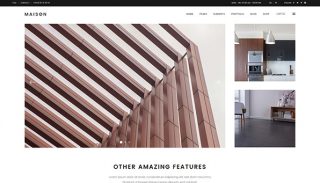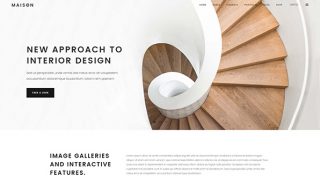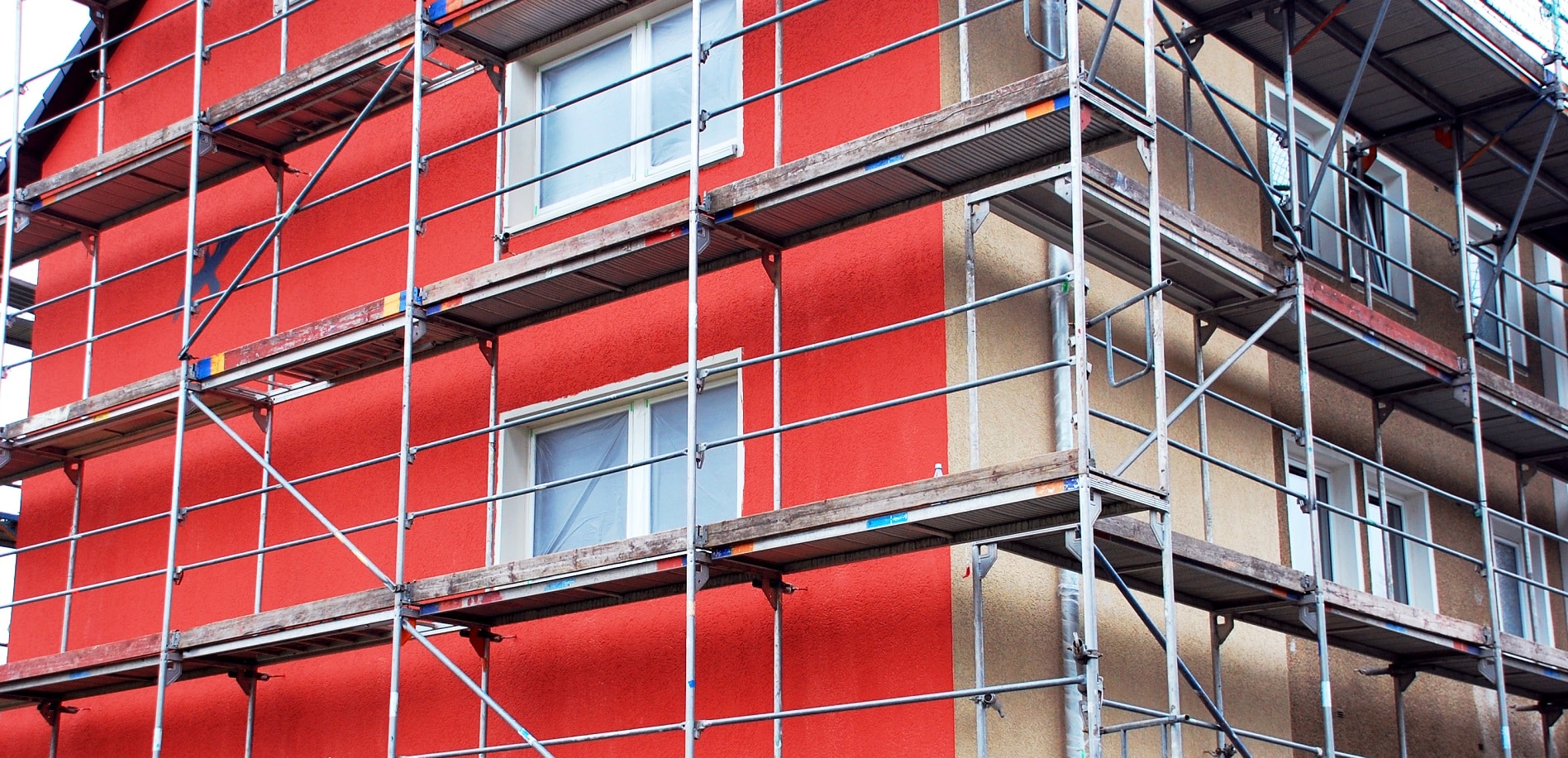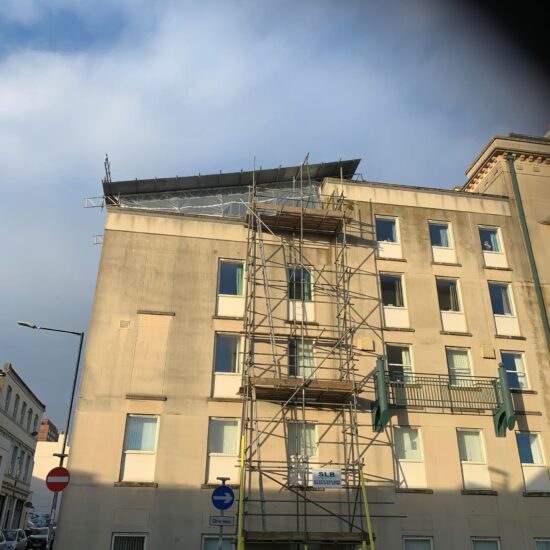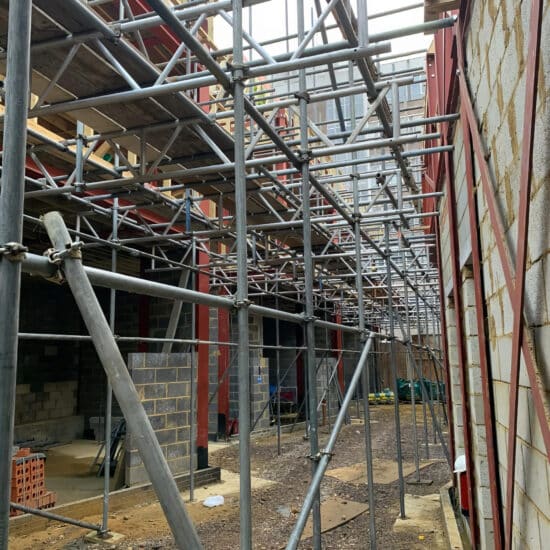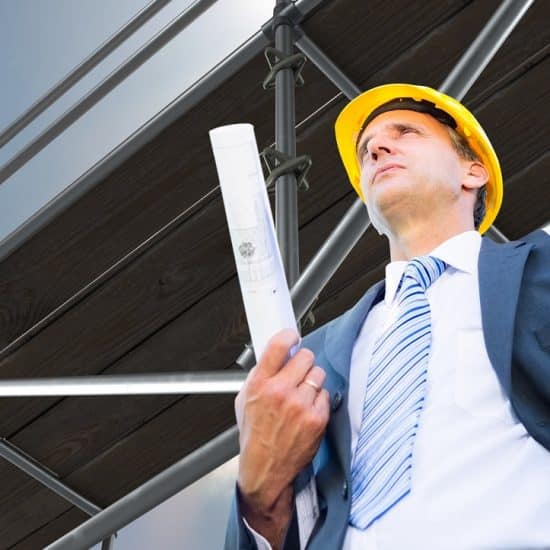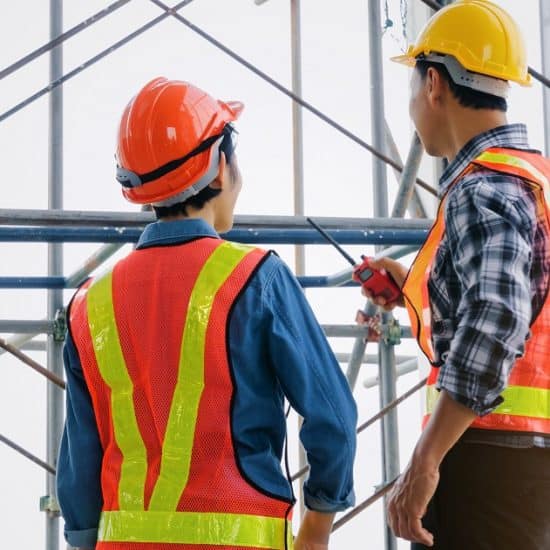Scaffolding is an important requirement for many construction activities, including commercial, residential and industrial applications. It may be used for inspection, access, repair, maintenance or construction. Usually formed from basic, repeating systems of boards, joints and tubes, scaffolding allows workers complete their jobs on a safe working platform.
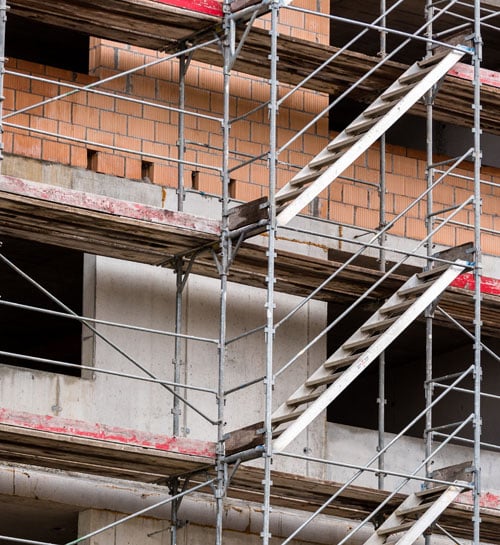
At JL Scaffolding, we provide efficient service and quality materials no matter the nature and scope of the project in question. Depending on your needs, there are many different types of scaffolds used in Brighton and beyond. They can be constructed from a wide variety of materials and in different sizes to suit the kind of project you’re embarking on. The weight they will be required to hold up also determines how they’ll be designed.
While there are many multiple types to choose from, there are two primary classifications of scaffolding:
- Independent tied scaffolds, for example, frameworks that are tied to an adjacent unit.
- Freestanding scaffolds, for example, independent towers.
Scaffolding Hire Services
- Scaffolding Hire in Brighton
- Access Scaffolding in Brighton
- Residential Scaffolding in Brighton
- Commercial Scaffolding in Brighton
- Decorating Access in Brighton
- Internal Scaffolding in Brighton
- Support Scaffolds in Brighton
- Temporary Roofing Scaffolds Hire in Brighton
- Suspended Scaffolding in Brighton
- Scaffolding Types
- Scaffolding Erection in Brighton
In addition to these, there’s a much wider range of scaffold types. These include:
- Birdcage scaffold
- Cantilever scaffold
- Cuplocksystems scaffold
- Double scaffold
- Haki scaffold
- Kwikstage scaffold
- Mastclimbing scaffold
- Patented scaffold
- Singleor supported scaffold
- Steel scaffold
- Suspended scaffold
- Trestle scaffold
- Tube&clamp scaffold
Get in touch with us right away for your scaffolding hire quotes. We are also available to offer scaffolding related advice where needed.
Birdcage scaffold
Often used for interior work in museums, churches and other large buildings, birdcage scaffold is typically used for a single level to allow workers access soffits and ceilings easily. It comprises parallel rows of standards linked in both directions by ledges.
Cantilever scaffolding
Also called single frame type or needle scaffolding, cantilever scaffolding may be used in situations where it’s impossible to build the structure from the ground up. There are a number of reasons why this may happen, for instance, it may be that you’re working high up on the side of a building or don’t want to obstruct traffic while working on a busy Brighton street.
The standards get support from a series of needles, often made from timber, attached to holes in window corners or wall. Between the headpiece and the needle, we will wedge vertical struts to prevent the needles from slipping out. Depending on the project at hand, we may construct a double type of version of the scaffolding where we will strut the needles to the floor via openings in the structure.
With this kind of scaffolding, only one side is attached to the building. This would mean anyone who has to work high up on the side of the structure will be better off using a harness for safety reasons. The advantage of cantilever scaffolding is that it allows workmen access places that may be awkward or hard to reach. Also, it’s relatively simple to construct.

Cuplock Systems Scaffolding
This scaffolding type is widely used where there’s a need to support heavy loads. It’s often made from galvanized steel produces highly standardised systems that are ideal for scaffolding designs that have repeated patterns. This is made possible by the cuplocks placed every 500 to 1,000mm.
Double scaffolding
Also known as mason’s scaffolding, double scaffolding is the most common type of scaffolding used by stone masons. This type of scaffolding structure uses itself as a support and it’s entirely separate from the wall. This is so because it’s tough to make holes in stone masonry for putlogs.
For a double scaffold, there must be two frames of standards. One frame is positioned 1.5m away from the first which is positioned as close to the wall as can be managed. Where it becomes necessary to handle heavier loads, the distance between both frames can be reduced. To make the structure sturdier, transoms are used on the ledges. Double scaffolding can be referred to as another type of supported scaffolding.
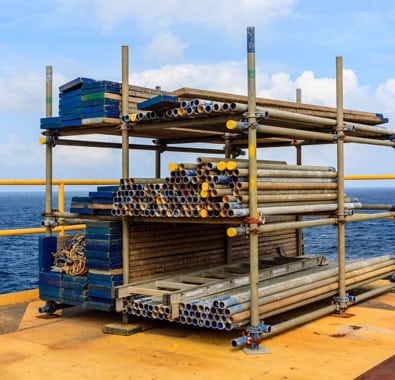
Haki Scaffolding
This type of scaffolding has fewer components and is lighter the other systems, making it adaptable, of great quality and safe. In addition to scaffolding, it’s also used for suspended and shoring systems. It’s one of the more durable systems as it’s approved for load class 6 with a typical Bay length of up to 3 metres.
Kwikstage Scaffolding
This scaffolding kind is relatively adaptable and easy to erect. It’s also more reliable and safer than many other options because of the guard rails and non-stop platforms that are included.
Patented scaffolding
This type of scaffolding can be purchased ready-made. Like steel scaffolding, it’s also made of steel, however, it has its own special frame and couplings. It can be easily assembled, but it doesn’t have the same kind of flexibility that traditional options have.
Trestle scaffolding
This scaffolding type is ideal for when you need to do indoor painting or make minor repairs. It’s essentially a platform or boarding held up by movable tripods or ladders. There are no putlogs, ledgers or standards. Lightweight materials are used to make this kind of scaffolding and it may be placed on wheels to make it mobile. That’s why it’s sometimes called rolling or mobile scaffolding.
Trestle scaffolding in Brighton is typically only used for jobs that require workers to go no higher than 5m. It’s a good alternative to a ladder since it offers a platform to work on. It may also be ideal in cases where any movable structure wouldn’t be practical, for instance, where you need to do a lot of work in one space. When constructed and used properly, mobile units are perfectly safe, but it’s still important to be careful as they can pose a hazard.
Tube & Clamp Scaffolding
One of the first kinds of steel scaffolding to be used, this type of scaffolding comprises 2 parts – tubes and couples or clips. It’s easy to assemble and dismantle, hence, its popularity in Brighton. Tubes are connected to create long runs before the horizontals and verticals are then connected with clamps. This system is flexible and can be made to odd shapes for irregular or round buildings.
Steel scaffolding
Also called tubular scaffolding, this type of scaffolding has many similarities to double scaffolding. Instead of timber, steel tubes are used and instead of rope, steel fittings or couplers are used. Also, standards are not simply fixed to the ground, they are welded to a base plate.
This kind of scaffolding comes with many advantages, however, it requires regular maintenance and skilled labour to assemble. It may also be expensive. That being said, it’s fire resistant and more durable than timber, in addition to being safer.
Mast Climbing Scaffolding
This type of system is similar to suspended scaffolding, but it can be made to climb up and down fixed last structures. It can also be extended to different heights in small increments to suit the worker’s needs. It works well for projects where there isn’t much ground area since it doesn’t require much space at the base of the structure.
Single or supported scaffolding
Also referred to as bricklayer’s scaffolding sometimes, single scaffolding is typically used by brick masons when they are building walls. This kind of scaffolding comprises a single framework of standards that are secured to the ground 2.4 to 3m apart from each other. Ledgers are used to connect to them to the wall with 1.2 to 1.5m between each ledger and the next.
Putlogs are used to connect the structure to the wall, with the putlogs linked to the ledgers using ties positioned 1.2 m apart. If the scaffolding needs to be particularly high, we can add extra support with braces. This system is also called supported scaffolding because it’s constructed from the base upwards.
It’s one of the most popular choices for construction companies in Brighton because it’s affordable, safe, convenient and easy to build. There are different forms of single scaffolding available, with each used in a specific circumstance and serving a specific purpose.
Suspended scaffolding
Suspended scaffolding is most often used by window cleaners on the side of a building. It may also be used for repair and maintenance jobs. Essentially, it consists of a boarding or platform with a guard rail that’s suspended from the top of the structure using chains, wires or ropes. On the other end, sturdy material is used to make a counterweight. This kind of scaffolding can be easily raised or lowered manually or mechanically as the workers require.
It must be properly secured or it may sway while being adjusted. Before every use, all the chains, wires or ropes must be carefully inspected for any possible damage. Sometimes, suspended scaffolding comes with debris nets that are used to catch building materials or tools that may slip off the platform. For safety reasons, it’s ideal for workmen to use a harness while using this kind of scaffolding.
Portfolio
Scaffolding Types FAQ's
Yes, we can, as long as we have sufficient information to offer a free, no obligation quotation. However, please understand that it may be easier for us to visit your site before providing a quotation as there are so many variables to consider.
Our payment terms are flexible and can be adjusted to suit the needs of our clients. We may agree to payment a fortnight from erection, subject to a credit check. Or we may agree on payment on erection. Whatever is better for you, we’ll be glad to discuss the terms with you.
Yes, if you don’t need it any longer. Before we proceed to dismantle the scaffolding, we’ll confirm with you first to ensure that you don’t need it for longer.
Depending on what we have to do, the sky dish may be a problem. There’ a good chance you’ll lose your sky signal once the scaffolding has been erected. However, you can have a qualified aerial engineer temporarily fit the dish to the scaffolding.
Scaffolding can be messy, but we understand that your garden is your pride and joy. We’ll take extra special care to ensure that your garden remains untouched.
You can get scaffolding erected immediately if it’s an emergency. Otherwise, we prefer you give us notice of at least one week, so we can plan.
Obtaining the permit is one of the services we offer, so you don’t have to worry about ensuring that your project complies with the local regulations. For a small fee, we’ll get the paperwork done on your behalf.
A permit is a document required by the local authority when the scaffold will have to occupy a public road or footpath.
Here, we don’t charge for providing an estimate for your project. We can even come to check your site ourselves without any additional cost to you.
The cost of scaffolding depends on a number of factors, including how long the scaffolding will be needed and the size of your project. For example, residential projects can differ significantly from commercial and industrial projects in terms of cost. Whatever the size of your project, you can rest assured ACE Scaffolding offer some of the most competitive prices in and around Brighton.
Both scaffolding and formwork are used extensively for specific kinds of projects in the construction industry. Don’t get confused for these terms of mistake them for each other because they are different. For projects where it’s necessary to hold wet concrete in place or mould it until it hardens to the shape required, formwork is used.
While formwork refers to temporary or permanent moulds or cases that hold wet concrete until it dries, scaffolding refers to temporary structures erected to serve as working platforms to support workers during repair, maintenance or construction work, allowing them to reach heights they otherwise wouldn’t have been able to reach.
Scaffolding and formwork are used for entirely different applications and have equally different requirements. Scaffolding must be easy to erect, convenient to transport and simple to dismantle. The platforms should be large enough to make it easy for workers to move around freely and easily transport materials. The structure as a whole needs to be solid enough to ensure that the weather does not affect it, causing it to tilt, deform or shake over time.
As for formwork, it needs to be strong enough to manage the weight of the concrete it supports as it hardens. It needs to be designed, taking into consideration the great deal of pressure wet concrete applies to the formwork, especially at the bottom. If it’s not properly designed, the formwork can break or bend as the concrete is being filled.
Unlike scaffolding that can be removed once work is completed, workers have to wait for the concrete to dry thoroughly before they can remove the formwork. It’s usually left in place for a number of days to be on the safe side because it could cause an accident if the formwork is removed too soon.
Scaffolding and formwork can also be differentiated by type. Some of the varieties of scaffolds used include stack, roof saddle, independent tied and birdcage scaffolds. Other scaffold structures include putlog, the hanging bracket and scaffold towers. On the other hand, types of formwork include traditional timber formwork and permanent insulated formwork or engineered, stay-in-place structural or reusable plastic formwork.
A column formwork system is a construction piece or framework that provides a building’s shape. being typically modular in nature, column formwork systems make speeded erection and installation on site possible while saving time and labour costs. To ensure the safety of the structure being constructed, the materials used need to be able to produce a durable and solid structure.
The forms are made of steel and in some cases, may have a timber form-face liner. Depending on the column size needed, forms can be adjusted on site to suite them The internal surfaces also vary to suit the concrete finish needed. Working platforms are typically erected separately for systems with disposable formwork, allowing for safe access to the top area of the column forms.
The three basic types of couplers including swivel couplers, putlog couplers and right-angle couplers. Sleeve couplers, also called spigots or end-to-end pins are used to join tubes. Besides these 3 major types, there are several other types and sizes available on the market. You may hear of half couplers, butterfly couplers, and so on.
Couplers may be made of a variety of materials, including plasma cut steel, forged steel, and so on. For every project we work on in Brighton, we use only the best scaffolding fittings that meet the safety requirement, not only to protect our workers, but to protect your property as well.
Couplers refer to the fittings which are used to hold the tubes of a scaffold together. They are used to link structural elements. There are different types of couplers which may be used to connect a transom or ledger to a standard or a ledger to the transom.
When construction work is being done on a building, scaffolding is used to provide support for the workmen as well as structural support for the building itself. Often, materials like metal tubing or piping are used to form the backbone of the scaffolding, along with boards and couplers. While there are several kinds of scaffolding, they’re all made up of the same basic elements, even if these elements differ in design.
There are 3 general components under which basic scaffolding elements are classified: transoms, ledgers and standards. A standard is a long tube or pipe that runs the length of the scaffolding, connecting the entire scaffold directly to the ground. A base plate serves as support for each standard as they are linked to the base, which helps with weight distribution and support.
Ledgers are placed in between standards in a horizontal fashion, improving the weight distribution and adding further support. Transoms come in various forms and are placed at a right angle on top of ledgers. There are intermediate and main transoms. While main transoms support boards and standards, intermediate transoms provide additional board support from their position alongside main transoms.
Apart from the aforementioned, there are many other supportive elements that provide support for the basic scaffolding. These include additional couplers, façade braces and cross braces, all of which can be used in a variety of combinations to provide support for structure in various ways.
Cross braces are used to improve the overall rigidity of a structure as they’re securely attached to standards and run diagonally between ledgers. They may also be secured to ledgers as ledger braces. As for façade braces, they are secured to the scaffold’s face and attached at every level, preventing the structure from swaying.
There are various scaffolding accessories which may be used in any combination, depending on the application and the type of scaffolding in question. They include parallel couplers, putlog couplers, fixed (right angle) and swivel couplers, steel hollow jack, girder coupler, fork-heads, putlogs, fixed and adjustable legs and baseplates, fixed and swivel flange clamps, drop forged joint pin, stair case, ladder beam and push pull steel prop.
The above mentioned accessories can be used with tube and coupler scaffolds as well as system and frame scaffolds. Other accessories include lifting accessories and wall ties, sole plates, toe boards, prefabricated stair units, filler unit platforms, planks, hop-ups, ladders and joint pins.
Multiply the total square footage by 25 pounds per foot. That would give you the maximum weight the scaffold can hold.
When working with one-point or two-point suspension scaffolding, the workers have to be tied off to a fall protection system or an anchor point that’s entirely independent of the scaffold they’re working on.
A scaffold should be properly inspected before first use and subsequently, it should be inspected every 7 days until it’s no longer needed. Further, it should be inspected further every time it’s exposed to conditions that may cause wearing down, for example, after substantial alterations have been made or in adverse weather conditions.
One of the most obvious hazards associated with scaffolding is falling from elevation. In addition to falling, other common hazards of scaffolds include electrocution, getting struck by falling debris or tools, and bad planking. Workmen need to take extra special care to protect themselves from these dangers. This includes wearing appropriate clothing and protective gear such as helmets and harnesses.
For construction projects in Brighton, you’ll need scaffolding 6 feet above a lower level as that’s the threshold height. On the other hand, for general projects, the threshold is 4 feet above a lower level. For projects where the height is up to 10 feet, fall protection is required.
Safety as it concerns scaffolding has to do with whether it’s safe to work on the system. Essentially, if the scaffolding has been erected by trained professionals using sturdy materials with a competent person supervising the process. Also, the scaffold must have been inspected properly before use. It’s important to note that some scaffolds won’t be as sturdy as others by design. In such cases, it would be best to use a harness to ensure the safety of workers.
Tag systems are not required by law, but it’s a legal requirement for scaffolding to be inspected if an individual can fall 2 or more metres from it. The inspection must be carried out and a report handed over by a qualified individual once the initial inspection has been completed and at least, every week thereafter.
The different kinds of scaffolding in use are specific to certain parts of the world, perhaps because the equipment is easy to obtain in that particular area and many people are familiar with the system. For instance, tube and clip is a well-known system in England and Wales while Kwikstage is more common in Scotland and Australia.
In many cases, local codes are written with specific scaffolding types in minds and there’s often a great deal of local expertise on how each system works. In places like Northern Europe and Scandinavia where labour is expensive, the preferred scaffolding type is aluminium scaffolding which can be built faster due to its lighter weight. In other countries where labour is more affordable and aluminium is expensive, bamboo and wooden poles are commonly used.
Related Blogs
Essential dos and don’t for scaffolding safety in construction
Falling is one of the leading causes of death at construction sites and accounts for more than 40% of all construction fatalities every year. A high percentage of these fatalities is attributed to scaffold related falls and accidents.Construction workers who
How to choose the right scaffolding company for your building project
When planning a construction project, it is easy to make the mistake of thinking that all scaffolding companies are the same. Unfortunately, this is far from the truth. Just as in in George Orwell’s Animal Farm, all scaffolding companies may
Lessons from the Scaffolding Collapse Accidents in Florida and Madrid
At the end of August, two construction workers fell from the sixth floor of a hotel under construction after a scaffold collapsed. It might have been three but the third worker hung on and climbed his way to safety.For reasons
Areas we cover
- Scaffolding Hire in North-Moulsecoomb
- Scaffolding Hire in Westdene
- Scaffolding Hire in Roedean
- Scaffolding Hire in Bevendean
- Scaffolding Hire in Portslade-by-Sea
- Scaffolding Hire in Portslade-Village
- Scaffolding Hire in Whitehawk
- Scaffolding Hire in Waterhall
- Scaffolding Hire in Rottingdean
- Scaffolding Hire in Hove

